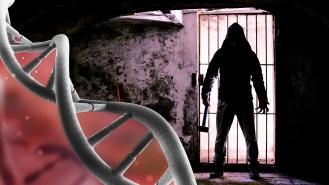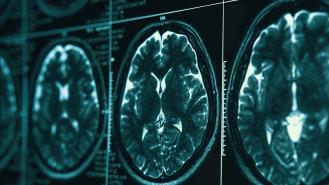
Starved of love: How 'attachment theory' may explain why some people become killers
Why do humans behave the way they do? A person’s personality, attitudes, beliefs and conduct are the result of a number of different factors. The reality is that the ‘versus’ in the often trotted-out phrase ‘Nature vs. Nurture’ is rather unnecessary. It’s not really a debate at all. We are the products of both nature and nurture. Our genetics comprise us. Our environment shapes us. We are a combination, so we’d be wise to do away with the concept that it’s a binary option.
In the context of violent crime and - specifically - serial killers, we know that ‘nature’ can play a role in their ‘creation’ (we explored the idea of ‘The Warrior Gene’ here in a recent article). Yet it seems more likely that external factors hold a little more weight in how violent psychopaths become vicious multiple murderers.
One idea which interests many psychologists and criminologists in this field is that of ‘attachment theory’. It’s a concept which many experts believe may explain how some of history’s most infamous serial killers came to be.
What is ‘attachment theory’?
Widely regarded in psychological and ethological circles as a sound premise, attachment theory is a concept that goes some way to explain how interpersonal relationships work. At its core, the idea states that for a human (and even certain animals) to develop healthy and ‘normal’ behaviour towards others in later life, they need to experience a close personal bond as a child.
Of course, nature provides almost all newborns with some really rather suitable candidates for the roles of primary caregivers… parents. The theory says that young children seek proximity to another individual and a close bond is formed. This would make a lot of sense, given how helpless and vulnerable young humans are. Not only that, but humans are born with less instinctive behaviours than most other species. Behaviour must be learned.
The most important period in the so-called ‘formative years’ is the first six months. There’s significant research and data which concludes that many severe behavioural issues in adults can be traced back to an absence of - or interruption to - a strong bond between the person as a child and a parent, caregiver or guardian.
How attachment theory can apply to crime
Understandably, since its invention, the idea has been applied heavily in criminology. Behavioural scientists have long wanted to know what drives violent criminals to act without care or empathy for their fellow man. Psychoanalyst John Bowlby’s attachment theory goes some way to explain it.
In his book, Psychology and crime: an introduction to criminological psychology, Professor Clive Hollins describes the theory as 'perhaps the most influential of contemporary psychoanalytically-oriented theories of crime'. Why? Well, it was one of the first widely accepted hypotheses that guided thought away from the fact that ‘the criminal’ was born and, essentially, doomed from birth.
The basic thought process behind how attachment theory plays into crime is simple: a child not allowed to bond with someone in their first six months fails to learn about strong personal bonds and grows up anxious in relationships with others, unsure of social cues and norms and resentful of others who were brought up ‘properly’. This can then result in delinquency as a young adult and violence and criminality in adults.
Starve someone of love and hatred tends to fill that space. After all, nature abhors a vacuum.
An explanation but not an excuse
As ever, when looking for a way to understand the mind of the violent, sociopathic criminal or serial killer, we need to proceed with caution. A break in the bond between mother and baby may very well be a large contributory cause of many a notorious murderer. Yet we need to be careful not to assume that one factor alone is enough. There may very well be a series of contributory elements at play.
Assuming that one factor, in this case, the interruption of attachment as a young child, can be a lone trigger is dangerous. Go down that hazardous road and you risk simplifying what makes a murderer and help offer up excuses to the small but callous subset of humanity that is prepared to take another person’s life. Understanding attachment theory may very well assist us in understanding the psychological make-up of some of the world’s worst serial killers. But it doesn’t present us with an excuse that these people can borrow.
To fully understand and appreciate just how attachment theory may affect serial killers, perhaps the best way is to look at some real-life examples:
Jeffrey Dahmer
Between 1978 and 1991, ‘The Milwaukee Cannibal’ Jeffrey Dahmer killed 17 men and boys in the most extreme ways imaginable. Those criminologists that emphasise the importance of attachment theory in creating monsters would point to Dahmer’s formative years and his mother and father’s tumultuous relationship. They would suggest his mother’s anxiety, drug abuse and spells of absence from the family home broke the bond that she had with baby Jeffrey and helped shape the psychotic killer he would become.
Aileen Wuornos
The most infamous ever female serial killer can point to more than just one fractured relationship as a child, she had several. Abandoned by her parents at a very young age, Aileen Wuornos was raised by her uncaring - and sexually abusive - grandparents. Unable to attach to her mother, father, grandmother or grandfather, she fixated on her brother. But due to the already toxic nature of her familial relations, their relationship soon turned extremely unhealthy too when it turned sexual. By the time she became an adult, Aileen Wuornos had little to no clue what a healthy relationship with another human being looked like.
Ted Bundy
Famously, Ted Bundy grew up believing his mother to be his sister. His mother was unmarried when she ‘fell pregnant’ with him in early 1946. Some folk have suggested that Bundy’s mother Eleanor Cowell was raped by her father Sam, but that’s never been confirmed. All we know for certain is that it’s an unusual and uncertain upbringing, with Bundy later claiming to have known that his sister was his mother all along.
What does that prove? Well, in isolation, not much. The three examples we’ve just explored may suggest that attachment theory stands up to some extent as a causal factor in explaining the actions of serial killers. That said, it is only anecdotal. Look into the backgrounds of your friends and peers and you’ll find plenty of stories of childhood issues.
Our conclusion? Attachment theory does shed light on the darkness that is the serial killer’s mind. But only some. It’s still a pitch-black abyss in which to stare.









